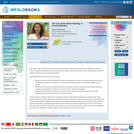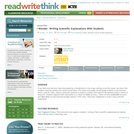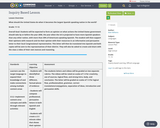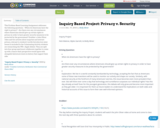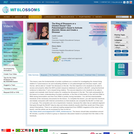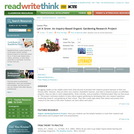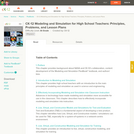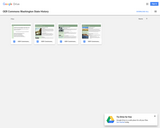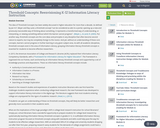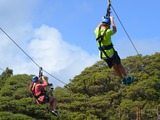What should the United States do when it becomes the largest Spanish speaking nation in the world?Grade: 11-12Overall Goal: Students will be expected to form an opinion on what actions the United States government should take by or before the year 2050, the year when the US is projected to have more Spanish speakers than any other nation, with more than 30% of Americans speaking Spanish. The student will then support their opinions with research and tie their opinion with their resources in an informative and persuasive letter to their local Congressional representative. This letter will then be translated into Spanish and both copies will be sent to the representatives of their district. They will also be asked to create and share with the class a video of their own stances and reasoning. StandardsLearning ObjectiveAssessmentLearners use the target language to expand their knowledge of and make connections among multiple content areas 3.5.2- Implement content area concepts and skills through relevant activities- Students will identifyfind three different, factual pieces of evidence - Students will compose professional, persuasive letters in both Spanish and English- Students will create a 2-3 minute video that shows their opinion and why they believe thatThe students letters and videos will be graded on two separate rubrics. The videos will be rated on scales of 1-3 for creativity, use of sources, logical flow, and strong intro, body, and conclusion. The letter will be graded on scales of 1-5 for logical flow, professionalism, grammar, correct translations/conjugations, separation of ideas, introduction and persuasion skills. Key Terms & Definitions: Bilingual: the ability to speak two languagesProficient: showing competency in somethingFluent: having the ability to express oneself with little trouble (even in another language)Non-Native speakers: people who speak a language but learned it outside of the homeNative speakers: people who speak a language they learned at homeInstituto Cervantes: worldwide non profit made by the Spanish government named after Miguel de Cervantes, author of Don Quixote Latino- people of Latin American descendancy, an ethnic groupHispanic- Spanish speaking countries or people who speak SpanishContent Farm - any website that appears high on a search engine’s search list with low quality content, trying to get large amounts of screentime to make money from ads Lesson Introduction (Hook, Grabber): To begin this lesson the students will be presented two videos. One video will bring up the topic of discussion, the main crux of this assessment: the fact that by 2050 the United States will become the largest Spanish speaking nation in the world. The video does not go on to propose any solutions or what we as the American people should do about it. The following video, however, shows a clip of President Donald Trump, in a Republican debate, saying the quote “We are in a country where we speak English, not Spanish” where the crowd responds with applause. This contrast of opinions currently in the United States on the subject will set the stage for when I will pose the question to the class. What should the United States do when it is the largest Spanish speaking nation in the world? I believe the students will be engaged in the question because of the polarizing effects of President Trump. He stimulates opinions in a majority of people, whether they are positive or negative, and with his inclusion into an already tantalizing discussion question I believe the students will be very interested and involved in the question and ensuing classwork. Lesson Main: After watching the video the guided research worksheet will be passed out. The students will be given two days of class time to use their devices or the computer lab to research evidence that supports their opinion. They will need to list three of the separate websites visited from which information was gathered. Each source must have all three of the following: author name, date of publication, and document title If a site is missing any of these things it will not be considered a valid source for them to use. The three criteria must be recorded on the guided research worksheet. Day 1 & 2: During class the first day I will give them a brief talk about ‘content farms’ and what sites to watch out for when composing arguments based on factual evidence (i.e Wikipedia, LiveStrong, Ask). Day 3-5: Once those two days of research are done they will then be asked to create a video in small groups of no more than four people, all of which must have the same opinions. This video will be about why they believe in what they do and to give at least three facts to support their opinions. These videos will be created during the next three days of class which will start the day I show my example video. I will explain the process of how I made the example video using iMovie. This will include my original recording of just my drawings on a whiteboard, putting the clip on to iMovie to adjust the speed of the video, recording my voice to match the video, and then the combination of the two. The students will be show how to work iMovie, record audio, record video, and then string the two together. The video will be a formative assessment of the cross curriculum learning being done, evaluated on it’s own separate rubric. Lesson Ending: Day 6 Before the final summative assessment is given, students will be first asked to share their videos. Students will be encouraged to take notes on each of their classmates videos. They will record information like what their opinion is, their three pieces of evidence, and their own opinion on if the evidence was worthy enough to convince a total stranger of that opinion. These will all be written down on a separate worksheet given to them. At the end of each video the group or individual will have the opportunity to answer any questions the audience may have about their opinion or their evidence they used to reinforce it. Once all students have done this they will be asked to watch the screencast which I have made for them. This will explain to them how to set up the beginning of a professional letter in both Spanish and English. This professional letter will be the final, culminating assessment of the entire project. The students will be tasked with compiling their opinions and evidence, having the opportunity to change/alter their evidence or even opinions after viewing videos of other class members, into persuasive letters. The letters, written by themselves, will be first drafted in English and focus on explaining the coming situation in 2050 when the United States becomes the largest Spanish speaking nation in the world. They will also explain what they believe should be done about this situation and why, citing their research. These letters will be professional and sent to local representatives to Congress; however, they will not be sent until they are translated into Spanish and both copies of the letter are in the correct, professional layout, printed, and signed. Afterwards, other copies of the letters will be turned in to me and evaluated using another rubric. The day the letters are turned in, the class will have a quick, anonymous vote (the classic closed eyes, raised hands) to show what the class believes should be done: make the US bilingual, make English the official language, or leave it as is and continue like we have been. Once this decision has been reached, the class will come up with their three most important reasons why they believe it should be this way and their decision will also be posted above their letters on the wall. Assessment Rubric: Video RubricCATEGORY3- Above Standard2- Standard1- Below StandardCreativityThe video was original and showed strong effort was put forthThe video was original and showed some effort was put forthThe video was not original and showed no effort put forth.Use of SourcesSources to back opinions were strong and prevalent through the video.Sources to back opinions were good and semi prevalent through the video.Sources to back opinions were weak and not prevalent through the video.Defined Intro, Body, and ConclusionThere is a well defined introduction, body, and conclusion with transitions.There is an introduction, body, and conclusionThere is no definitive introduction, body, and conclusion.Logical FlowThe video flows as a whole with one topic leading into the otherThe video goes through multiple different topics, yet does not have logical transitions between themThere is no order to the video and it does not follow a logical series of events. Letter RubricCATEGORY5 - Exceeds Standards4 - Above Standards3 - Meets Standards2 - Approaching Standards1 - Below StandardsProfesionalismThe letter demonstrates a strong sense of professionalism and respect for the receiver. The letter is formatted correctly and professionally.The letter demonstrates a good sense of professionalism and respect for the receiver. The letter is formatted correctly and professionally.The letter demonstrates a standard sense of professionalism and respect for the receiver. The letter is formatted correctly and professionally.The letter demonstrates a weak sense of professionalism and respect for the receiver. The letter is not formatted correctly or professionally.The letter demonstrates no sense of professionalism or respect for the receiver. The letter is not formatted correctly and professionally.GrammarThe letter has no grammatical mistakes or punctuation errors.The letter has a few grammatical mistakes or punctuation errors.The letter has some grammatical mistakes or punctuation errors.The letter has a lot of grammatical mistakes and punctuation errors.The letter is littered with grammatical mistakes and punctuation errors.Logical FlowThe letter has a clear introduction, body, and conclusion. There are no tangents and all opinions are supported with evidence.The letter has a clear introduction, body, and conclusion. There are a few tangents and almost all opinions are supported with evidence.The letter has an introduction, body, and conclusion. There are some tangents and most opinions are supported with evidence.The letter has an unclear introduction, body, and conclusion. There are a lot of tangents and few opinions are supported with evidence.The letter has no clear introduction, body, and conclusion. There are several tangents and no opinions are supported with evidence.Correct Translations/ConjugationsThe Spanish copy of this letter reflects the same points and evidence that the English version does. There are no verb conjugation mistakes.The Spanish copy of this letter reflects most of the same points and evidence that the English version does. There are few verb conjugation mistakes.The Spanish copy of this letter reflects a majority of the same points and evidence that the English version does. There are some verb conjugation mistakes.The Spanish copy of this letter reflects few of the same points and evidence that the English version does. There are a lot of verb conjugation mistakes.The Spanish copy of this letter does not get across the same points. The letter is littered with verb conjugation mistakes.Separation of IdeasEvery opinion is fully developed and thought out. Each one has many supportive details and information to back them up.Most opinions are fully developed and thought out. Each one has some supportive details and information to back them up.A majority of the opinions are fully developed and thought out. Each one has a few supportive details and information to back them up.Some opinions are fully developed and thought out. Each one has a some supportive details and information to back them up.None of the opinions are fully developed or thought out. Each one has no supportive details or information to back them up.Introduce Topic/Use Persuasion SkillsThe topic was thoroughly introduced and the use of persuasive skills was strong throughout the letter.The topic was well introduced and the use of persuasive skills was good throughout the letter.The topic was introduced and the use of persuasive skills was evident throughout the letter.The topic was kind of introduced and the use of persuasive skills was in parts of the letter.The topic was not introduced and no persuasive skills were used at all. Resources / Artifacts: Hook/Grabber Videos-Newsy with the Why:https://www.youtube.com/watch?v=XMf-luVOKocTrump in Republican Primary Debate:https://www.youtube.com/watch?v=eNjcAgNu1Ac Lesson Main Resources-Guided Research: https://docs.google.com/document/d/1xmAJ32oeKlwWp42S5f-Im5IyUblMg8L7lPankZI-9B0/edit Video Notes: https://docs.google.com/document/d/1mXRVSFh5oMYJPFon-0ynkGQDWT6vHPLltFf5vnesxLs/edit Example Video-https://youtu.be/lT3gbN9MTrA Screeencast- Writing Final Letter: https://drive.google.com/open?id=0Bywn_ulH7UpGQy1XX2NINDRVcEk Differentiation: High ability students:will be expected to make a references page at the end of their video and cite all references according to APA style guidelines Students with different, lower abilities:will be permitted at least one content farm as a piece of evidence 3. Students with different backgrounds:may use their experiences as one of their three pieces of evidence 4. ESL students:may compose their first draft of the letter in Spanish and translate it to English 5. Students without access to the internet/electronic devices:will be given access to the lab during my classwill be allowed to come and work with me during my prep period on their videos Anticipated Difficulties: The students have the possibility to run into some problems along the way. These problems may include finding quality sources, not having a large enough vocab in Spanish to translate their letter accurately, and/or not enough knowledge of conjugations to translate their letters well. If students have trouble finding quality sources I will have a list of my own few sources for each argument. I will point them in the direction of Google searches which should yield at least one of the websites on my list for them to explore. If the students do not feel that they have a large enough vocab in Spanish to translate the letter using words that get the exact point across they want, rather than the same general idea, I will have Spanish-English dictionaries for the students to use in class or a website which they can use at home. If their knowledge of conjugations is lacking because they have not experienced a certain type of conjugation in Spanish that they are comfortable using in English I will personally step in to explain how the verb should be conjugated in the situation and why.

